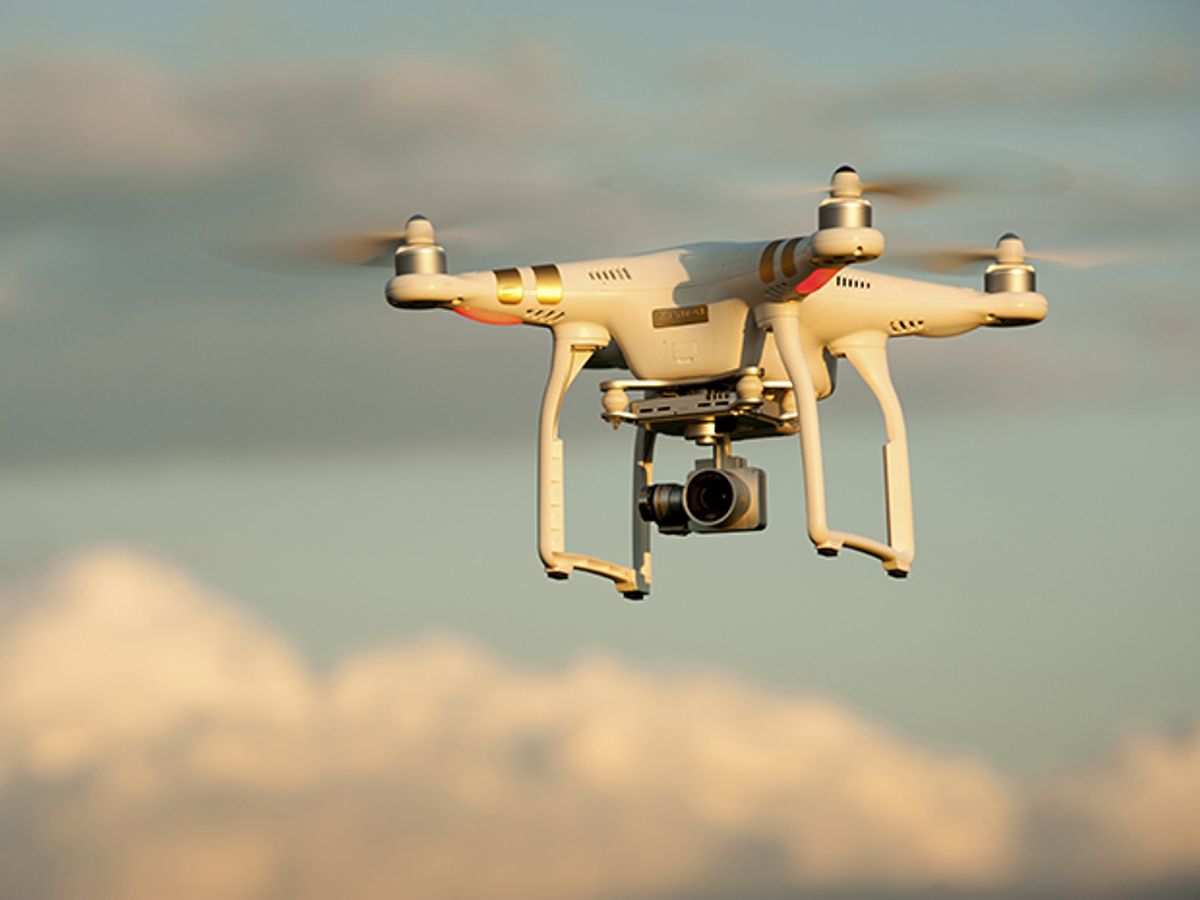Sigh. You’ve heard this “sigh” before: it’s the “oh great someone else is promising consumer drone delivery now” sigh. According to documents seen by Reuters, Wal-Mart has filed an application with the U.S. Federal Aviation Administration to test drones for a variety of purposes, including package delivery to homes.
Wal-Mart has been testing drones indoors for months, and they plan to use drones made by DJI for their expanded testing program, pending FAA approval. Wal-Mart is asking the FAA for permission to test drones for at least three different purposes. The first one seems reasonable:
In the FAA application, Wal-Mart said it wanted to test drones for taking stock of trailers and other items in the parking lot of a warehouse using electronic tagging and other methods. A Wal-Mart distribution center could have hundreds of trailers waiting in its yard, and a drone could potentially be used to quickly account for what each one is holding.
That makes a lot of sense. A warehouse parking lot is a well-defined space that Wal-Mart can control, making drone navigation and obstacle avoidance both possible and safe. With RFID tags on the items inside, and perhaps some infrastructure in or around the trailer, a drone may be able to keep track of everything that’s going on. Although, it seems weird that there isn’t a simpler solution that Wal-Mart has already implemented, but whatever. Yay drones!
Next, the Reuters story describes a “grocery pickup” application:
The retailer also wants to test drones for its grocery pickup service, which it has recently expanded to 23 markets with plans to add another 20 markets next year. The test flights would confirm whether a drone could deliver a package to a pick-up point in the parking lot of a store, the application says.
So, you’d drive to a specific area, and a drone would bring a small grocery-type package to your car, placing the item on the ground or maybe dropping it into some sort of receptacle next to you. That could work, I guess, but the packages carried by the drones would have to be really small, so forget getting all your groceries brought to your car without having to step inside the store. Unless all you need is a head of lettuce. Now, if the goal is to bring people their groceries in the parking lot, Wal-Mart should consider testing a system with ground robots: it’d be more reliable and have a much bigger payload.
And then we get to the third reason Wal-Mart wants to use drones:
Wal-Mart also said it wants to test home delivery in small residential neighborhoods after obtaining permission from those living in the flight path. The test would see if a drone could be deployed from a truck “to safely deliver a package at a home and then return safely to the same,” the application says.
Yep. Of course we had to have the (now obligatory) home drone delivery program without any specifics.
To understand our pessimism about drone delivery (I’d love to call it realism, but it’s probably pessimism at this point), you can (re)read our December 2013 post about Amazon’s proposed drone delivery, in which we highlighted a bunch of technical problems (and a few legal and social ones) that we felt would need to be solved before drone delivery (in the form that it’s been consistently presented by the companies talking about it) could actually happen.
Almost two years later, we’ve seen very little progress on solving most of these problems. We have seen all kinds of new drone designs, and videos of drones doing the easy parts (Google showed a demo just last week), but if we were to make a plot with time on the x axis and tangible progress towards drone delivery on the y axis, you’d be looking at a nearly flat line.
It’s certainly possible that a bunch of progress has in fact been made, but that companies have kept it all proprietary and confidential. Maybe Amazon or Wal-Mart or Google will suddenly unveil a consumer-ready delivery drone system as soon as the FAA says it’s okay. But, it seems doubtful. We keep pretty careful track of robotics research, including drone research, and we’re just not seeing the types of advances that would be necessary for safe, reliable, cost effective urban drone delivery.
What we are seeing is the effect that these drone delivery proposals, despite their lack of details, have on consumers: people seem to think this kind of service is just around the corner. Here are some results from a survey of 1,400 online consumers by Walker Sands Communications:
- 66% of consumers think they will receive their first drone-delivered package within the next five years, and nearly 40% are expecting it within the next two
- 32% of consumers would be willing to pay more than $20 for one hour drone delivery (23% wouldn't be willing to pay anything)
- Only 12% of consumers wouldn’t trust drones to deliver packages, based on concerns including safety and privacy
The problem I feel like we have here is that companies look at these statistics and say, “Wow, clearly we need to work on delivery drones,” so they start working on delivery drones, and then consumers are like, “Wow, this company is working on delivery drones, that must mean we’re going to get delivery drones, we want delivery drones!” It’s a hype cycle that feeds off of itself, because companies can’t help but sell an unrealistic dream that consumers really, really want to buy.
Via [ Reuters ]
Evan Ackerman is a senior editor at IEEE Spectrum. Since 2007, he has written over 6,000 articles on robotics and technology. He has a degree in Martian geology and is excellent at playing bagpipes.



